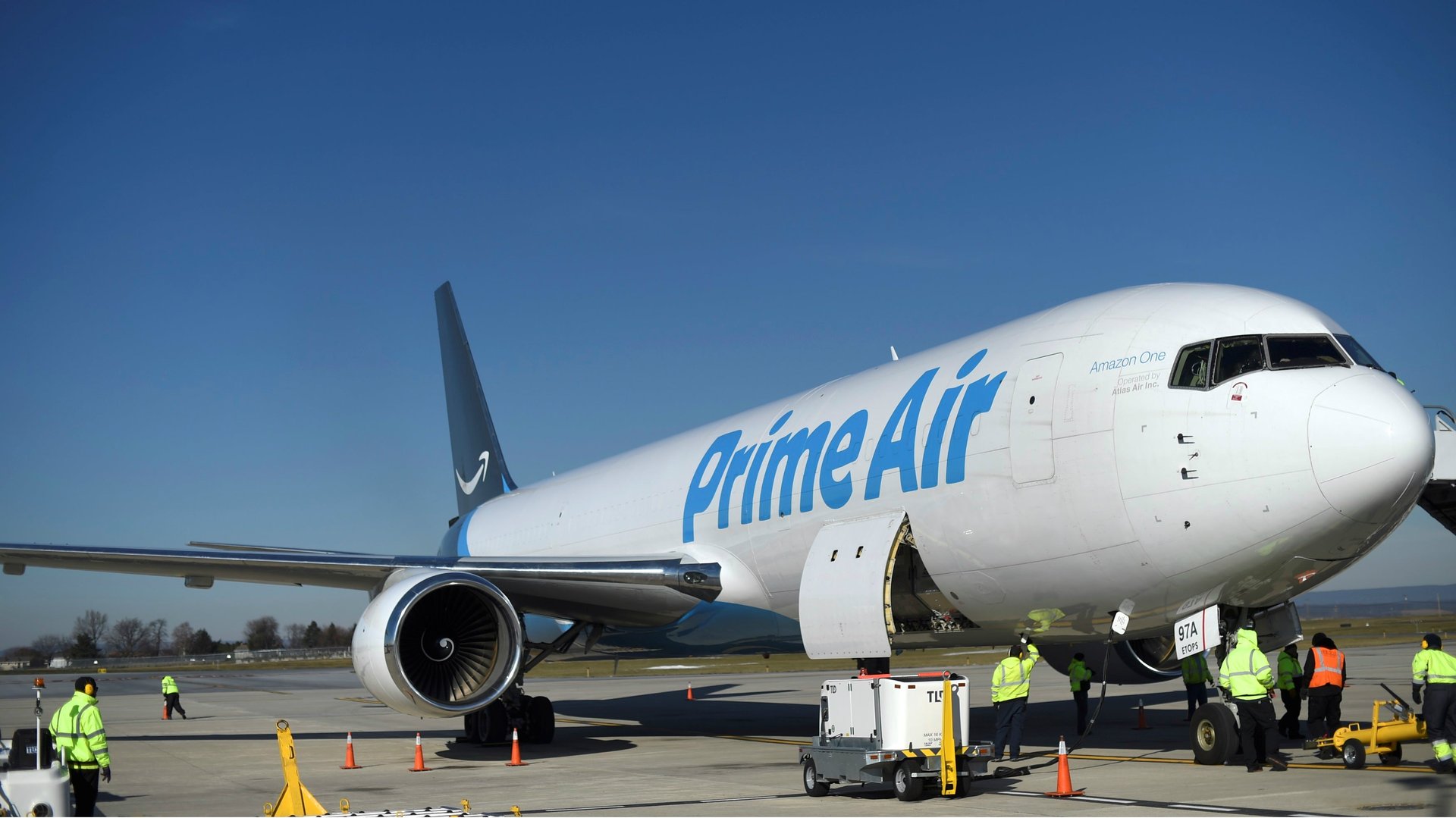With a new $1.5 billion airport hub, Amazon is closer to having its own parallel transport network
The breezy 2016 strategic plan (pdf) of the Cincinnati/Northern Kentucky International Airport features a quote attributed to Abraham Lincoln: “The best way to predict your future is to create it.” Amazon appears to have taken that to heart.


The breezy 2016 strategic plan (pdf) of the Cincinnati/Northern Kentucky International Airport features a quote attributed to Abraham Lincoln: “The best way to predict your future is to create it.” Amazon appears to have taken that to heart.
The mammoth online retailer this week announced it will build a hub for close to $1.5 billion at the airport—which is based in the American midwest—as an investment to serve the growing fleet of Prime Air cargo planes it unveiled last year. Its new air cargo hub will help Amazon quickly scoop up and deliver goods goods from 11 nearby warehouses and distribute them across the US.
The hub is the latest sign that Amazon is collapsing the supply chain that gets the millions of goods it sells on its website to consumers—a strategy that can reduce Amazon’s shipping costs, payments that often end up in the hands of traditional shipping companies, like FedEx and United Parcel Service.
Amazon late last year made its first drone delivery, 13 minutes after the order was placed. It isn’t yet clear how drones deliveries could become viable in big cities, but Amazon, is still prepping for a future where unmanned drones drop items off to customers. In 2016, the US government awarded it a patent for a floating, Zeppelin-like warehouse that spits out delivery drones.
And Amazon’s lofty ambitions, which also include brick-and-mortar grocery stores and bookshops, aren’t limited to sending cargo by air. The company is now booking its own ocean freight, the Wall Street Journal (paywall) reported last month. It’s a job that previously went to a freight forwarder, so it’s another cost that Amazon could cross of the list if it does it itself. The company has also gone on a warehouse-building tear.
The payoff to building this futuristic network promises to be great. Colin Sebastian, an analyst at investment firm R.W. Baird, wrote in a note that Amazon could turn this de facto transport network into a business on its own, calling it a more than “$400 billion market opportunity.”
Amazon has built its myriad of businesses on, at times, terrifying efficiency and it has detailed information about what its customers are ordering and how. Customers now expect deliveries to come ASAP—and often for free. Wal-Mart is now trying to catch up to Amazon.
It’s not something you want to get wrong. UPS was caught flat-footed by not realizing that deliveries to consumers were growing more than deliveries to business, and logged quarterly profits below analysts’ expectations. “We saw was a tremendous shift in the amount of volume that went to the consumer versus to the business,” UPS’ chief financial officer, Richard Peretz, told CNBC.
“In fact,” he added, “we looked over the last 10 years and this is the fastest rate of change.”